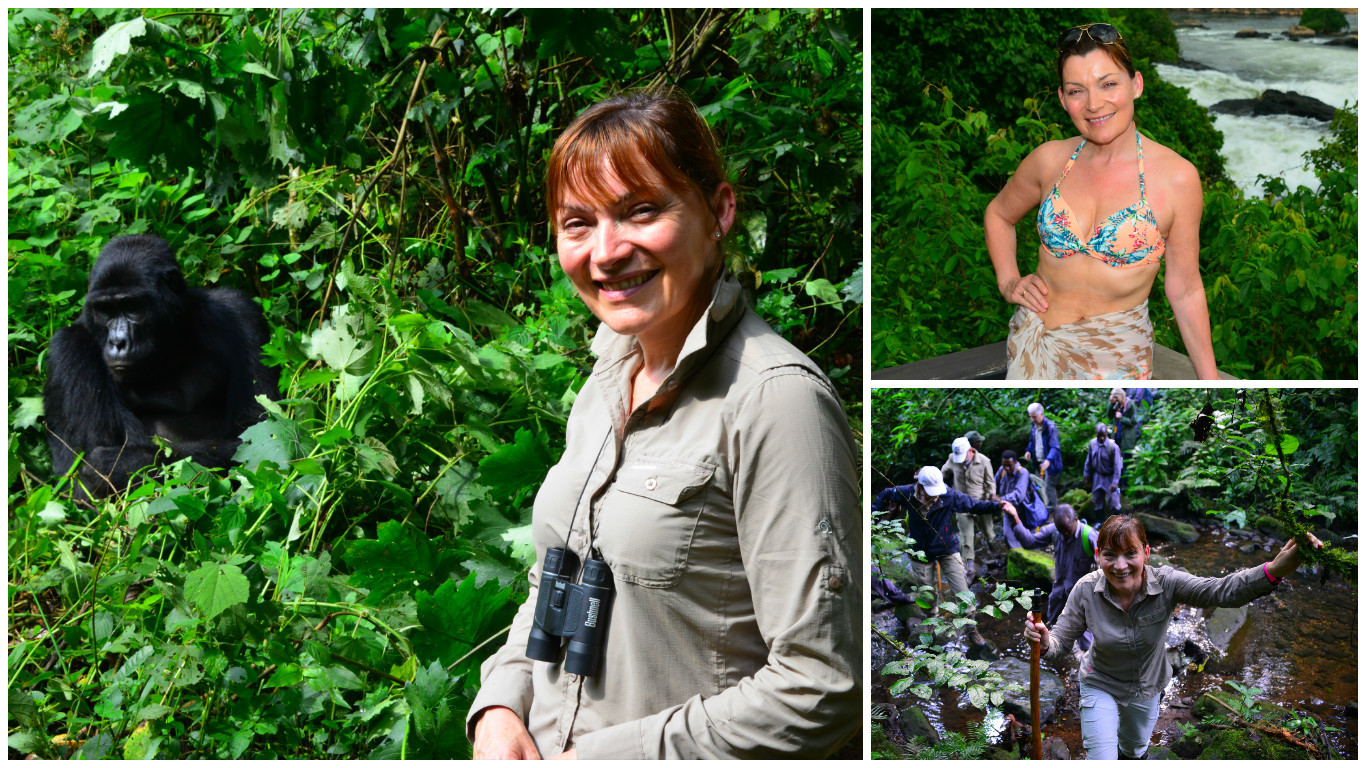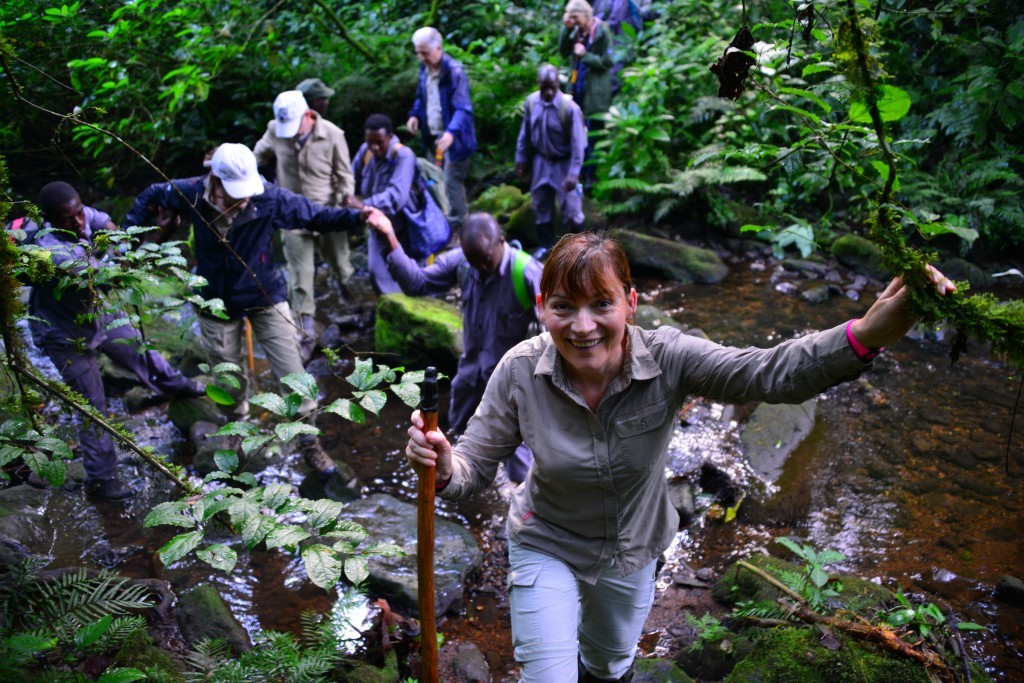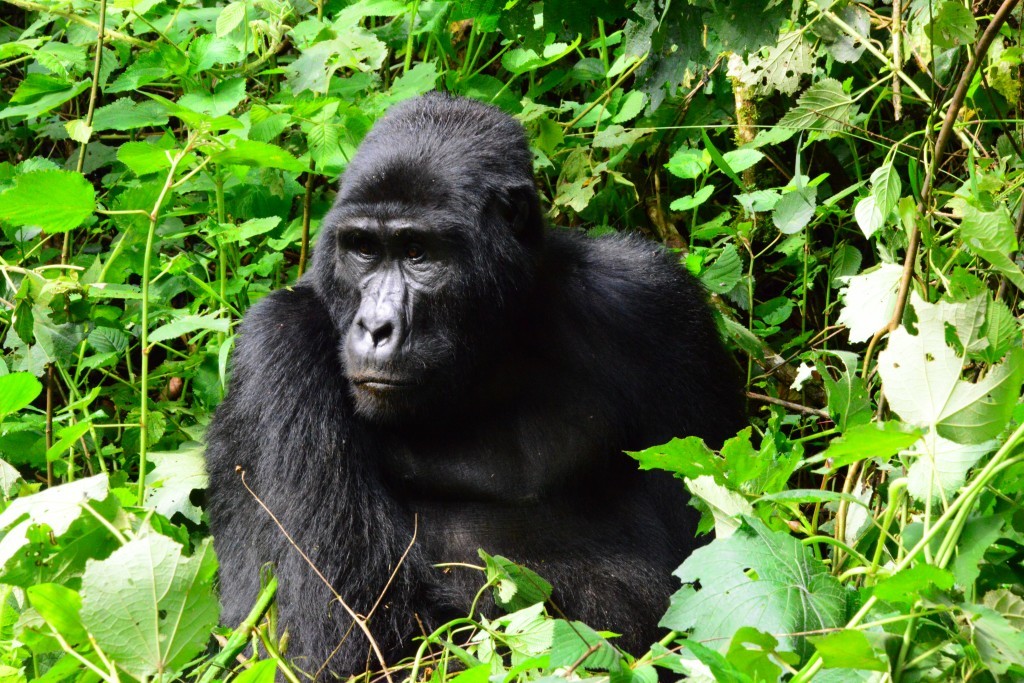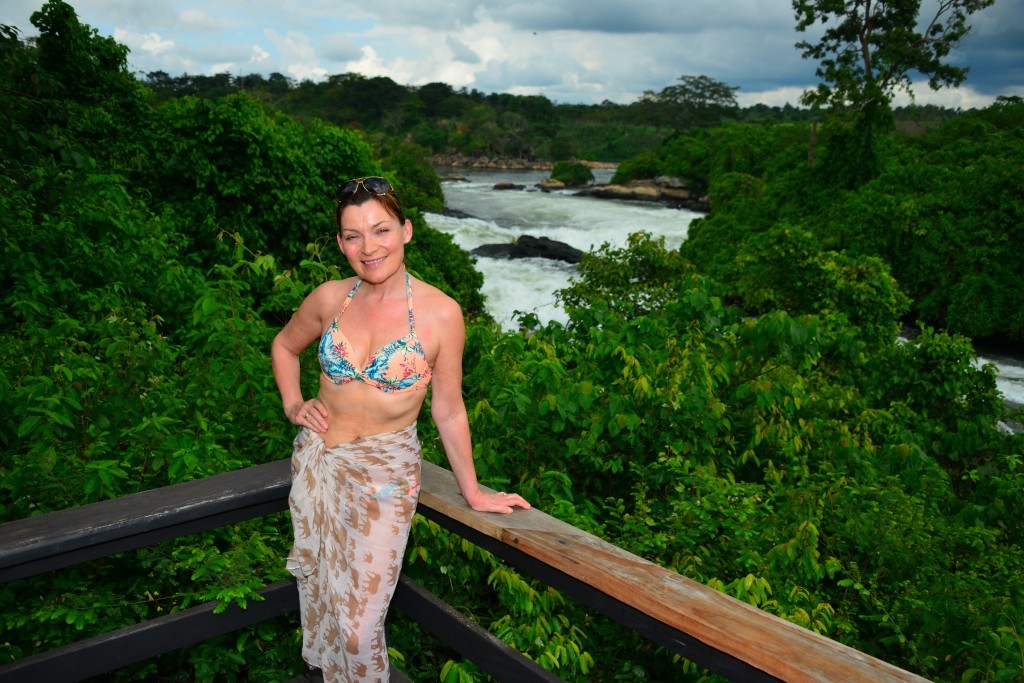
I was at the head of our group trekking through the wonderfully named “Bwindi Impenetrable Forest” in Uganda and we had stopped for a breather when a young male gorilla just sauntered along the rough track in front of me.
It was so astonishing I was rooted to the spot, couldn’t speak and was too busy actually enjoying the moment to take a photograph.
He swept past me and casually sat down and began eating leaves while ignoring our enchanted group of eight hot, sweaty and deliriously-happy trekkers.
This was really a trip of a lifetime.
Like most people I have always admired these majestic creatures and was enthralled by the story of wildlife pioneer Diane Fossey whose story was told in the movie Gorillas In The Mist.
Half of all the 880 mountain gorillas left in the world are found in Uganda.
The others are in neighbouring Rwanda and the Democratic Republic of Congo.
Civil wars and poaching devastated their number, but in Bwindi the incredible Rangers, guides and conservationists are doing a remarkable job of keeping them safe.
Local people realise that tourists like us bring much-needed revenue to the country and are right behind their efforts.
There are now around 400 mountain gorillas in Bwindi Forest, made up of 12 families and the number has been increasing every year.
There are strict limitations on visitors and no more than eight people are allowed in each group, which means it’s all very civilised and there’s no jostling for the best photo.
These mountain gorillas do not survive in captivity.
The gorillas you see in zoos are from the lowlands but none of these creatures should be behind bars and seeing them in the wild is humbling and magical.
You can’t go too close, and if they come to you then you need to slowly back away – not because of any danger from these vegetarian gentle giants but human beings are full of bugs, germs and diseases that could prove fatal to them.
No one with a cough or a cold is allowed on the trek as the wellbeing of the animals is of the utmost importance.
You need to be reasonably fit to go trekking and be happy roughing it a bit.
You might very lucky and encounter a family after less than an hour’s walking, but you have to be prepared to hike in tough terrain for a lot longer. Mountain gorilla families make “nests” every night and then move to a fresh part of the forest every day.
Make sure you hire a “porter”. Not just to carry water and your packed lunch, but to take your hand and expertly help you though the rainforest when it gets steep and slippery.
It’s the best 15 quid you will ever spend, and as all the porters are local you are helping them to make a living and feed their families.
Gorillas have a distinctive smell – a bit like spicy, musky, balsamic vinegar and as long as you are quiet, respectful and don’t make any sudden movements they will tolerate your presence.
They do, understandably, have limited reserves of patience and get a bit fed up with us staring at them and taking endless photos and selfies, so after an hour you need to leave them in peace. Our accommodation “Mahogany Springs” on the edge of the forest was luxurious enough to be extremely comfortable, but retain enough rough edges to ensure you have that wilderness spirit of adventure experience.
That’s not an easy thing to achieve but British owner Barrie Gotch, who came to this part of the world on holiday and fell in love with it, has managed with aplomb.
The staff couldn’t be more helpful and after a tough day’s trekking I can heartily recommend a massage on your private balcony.
After two amazing days we headed back to Entebbe airport in a tiny plane which gave us a chance to see some of the wonderful scenery. You can understand why Winston Churchill called Uganda the “Pearl of Africa”.
We had a fascinating three hour jeep journey to “Wildwaters Lodge” on an island near the town of Jinja at the source of the Nile.
Our own private tented accommodation looked over the thunderous rapids and was the height of luxury.
There was even a bath on the terrace where I wallowed while sipping cold fizz and drinking in the views and the incredible bird life, feeling like a spoiled princess.
Details:
Fly with KLM from £500.
Cost of this trip (gorillasafaricompany.com, tel 01327 437 050)
Travelling in high season 2016 from £2,555
Uganda Wildlife Authority website: http://www.ugandawildlife.org/
Gorilla permits should be purchased through a tour operator.
They cost: $450 in low season (April, May & November)
$600 in high season (all other months)

Enjoy the convenience of having The Sunday Post delivered as a digital ePaper straight to your smartphone, tablet or computer.
Subscribe for only £5.49 a month and enjoy all the benefits of the printed paper as a digital replica.
Subscribe

